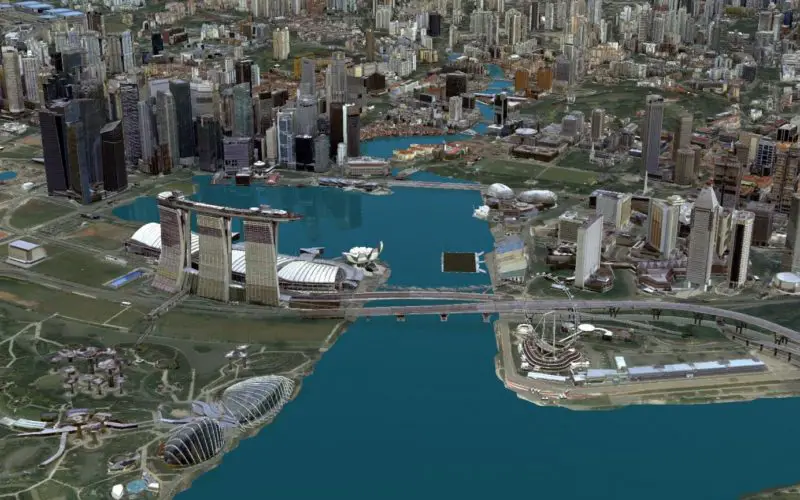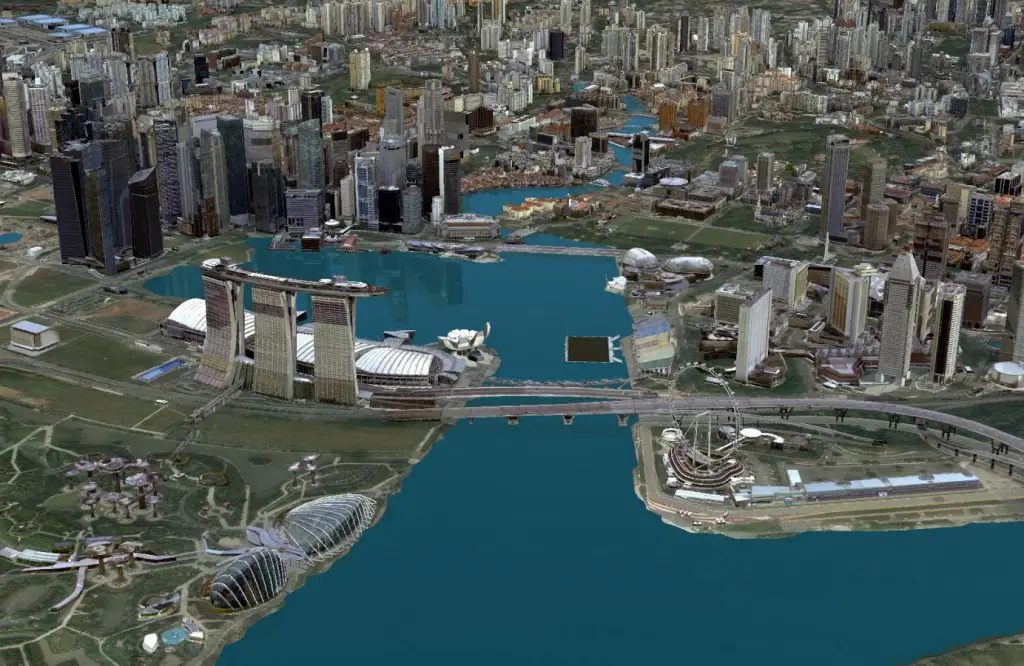
The Singapore Land Authority (SLA) has revealed the highly anticipated first phase of its national 3D mapping project to an audience of more than 16,500 of the world’s leading geospatial professionals – at the Esri International User Conference (UC) in San Diego this week.
The 3D models being showcased at the event – which use advanced Geographic Information System (GIS) technology to generate compelling ‘real world’ visualisations of the entire island – are part of a whole-of-government Smart Nation initiative aimed at improving risk management, facilitating collaboration and enhancing decision-making among Singapore’s public agencies.

Singapore Land Authority 3D Smart Nation Map; Credit: Esri Singapore
The project has also produced the biggest geospatial dataset ever collected homogenously in Singapore, featuring more than 100 terabytes of data and products which can be used by multiple agencies to create 3D maps and models.
SLA CE Tan Boon Khai said “SLA is committed to pushing geospatial and technological boundaries to propel Singapore towards a Smart Nation. We are leading the development of Singapore’s 3D mapping initiative which would form a key component of Virtual Singapore. This would enable sharing and analysis of geospatial data to improve sense-making capabilities, test-bedding and assimilation of concepts to find solutions to emerging and complex challenges.”
Esri Singapore CEO Thomas Pramotedham – who is in San Diego to support SLA’s week-long showcase entitled “3D mapping of Smart Singapore” – said the project would serve as a new global benchmark for the world’s leading cities.
“Singapore is one of the most advanced in the world when it comes to using GIS technology for Smart Nation development,” Mr Pramotedham said.
“Traditional 2D town planning maps are inadequate to represent our complex environment, but when city planning scenarios are translated into a 3D ‘real world’ scenario, we can design, build and develop with absolute clarity and precision.
“By using GIS technology, SLA has been able to truly bring their vast array of data alive in a way not possible with any other tool. As a result, government agencies are now positioned to make smarter decisions regarding the future of Singapore.”
“For example, the 3D models could be used to identify the island’s solar energy potential; determine how proposed new buildings may affect the city’s skyline; and subterranean planning with the optimisation of underground land use.”
SLA’s 3D models – which are on display at the Esri UC National Government Exhibit until Friday – will form a key component of Virtual Singapore, one of the projects under the Smart Nation initiative.
Other examples of how SLA’s 3D models may be used include:
For further information on how GIS technology is enabling Singapore’s Smart Nation initiative – contact Esri Singapore on 6742 8622.
GIS Resources is an initiative of Spatial Media and Services Enterprises with the purpose that everyone can enrich their knowledge and develop competitiveness. GIS Resources is a global platform, for latest and high-quality information source for the geospatial industry, brings you the latest insights into the developments in geospatial science and technology.

